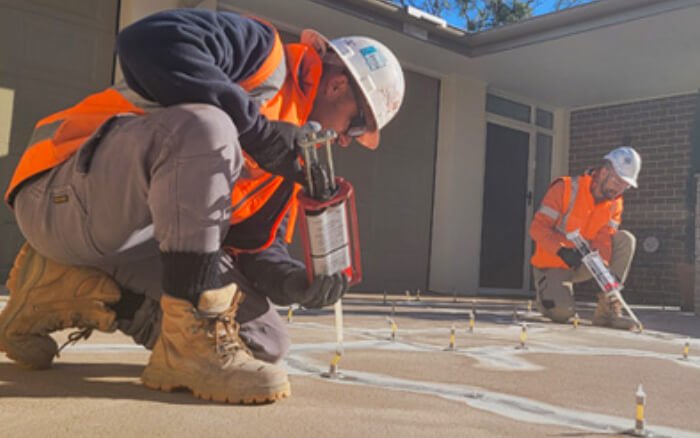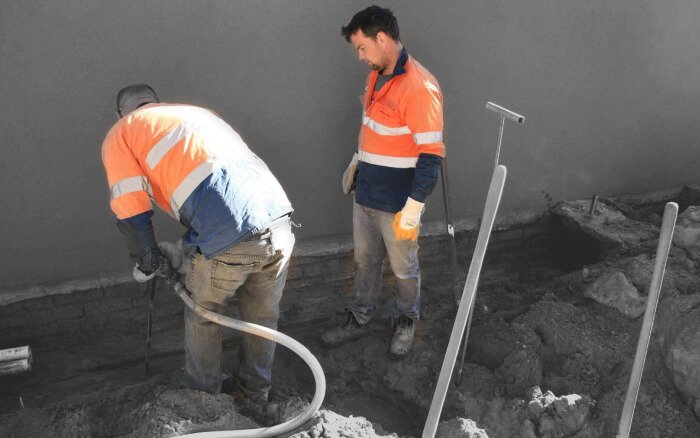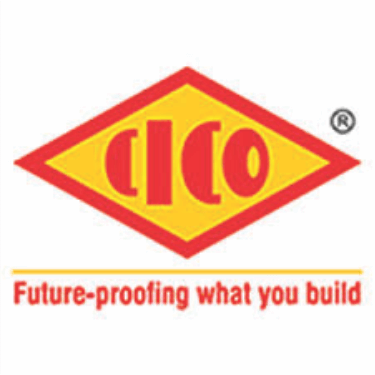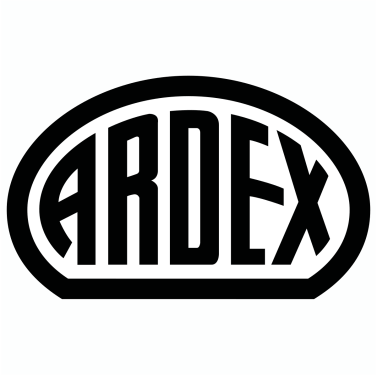What is Epoxy Injection Grouting?
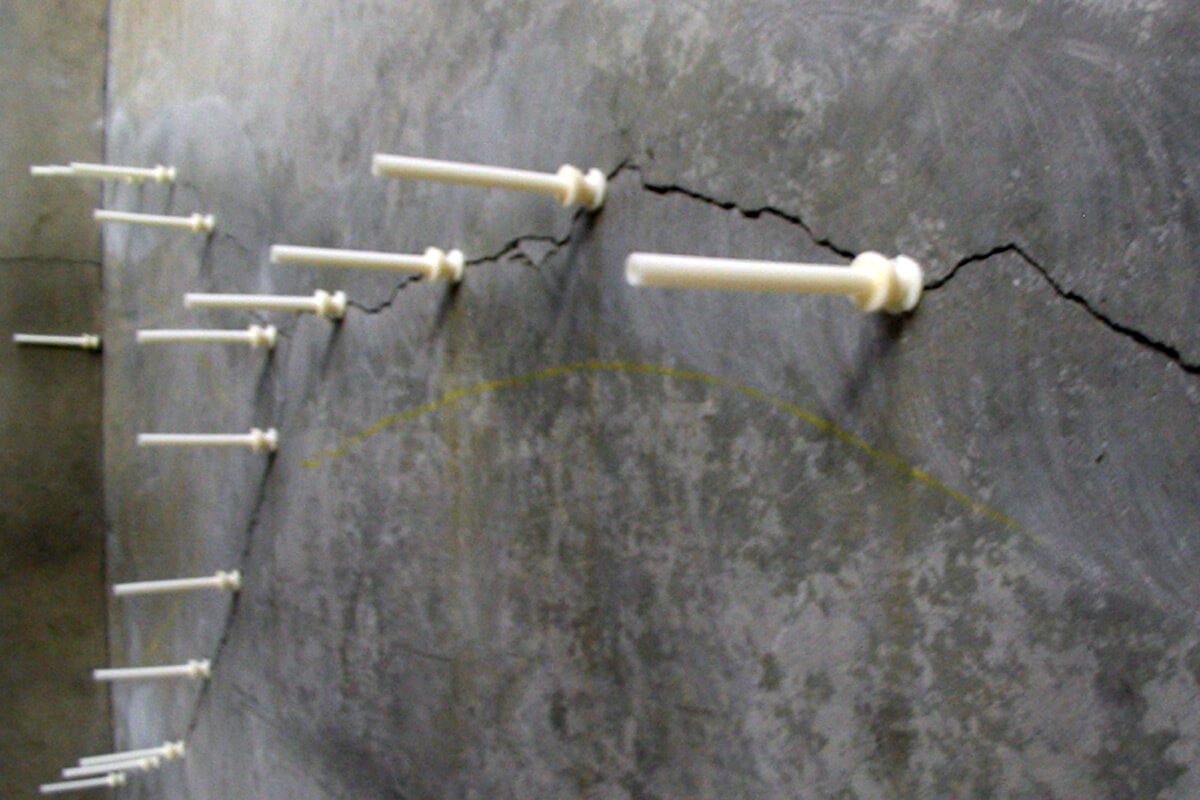 Epoxy Injection Grouting is a highly effective method used to repair cracks and voids in concrete structures. It involves injecting a low-viscosity epoxy resin into cracks in concrete to fill and bond the fracture, restoring the structural integrity of the concrete. This method is commonly used to repair cracks in foundations, walls, and other critical structural elements that need to maintain their original strength and load-bearing capacity.
Epoxy Injection Grouting is a highly effective method used to repair cracks and voids in concrete structures. It involves injecting a low-viscosity epoxy resin into cracks in concrete to fill and bond the fracture, restoring the structural integrity of the concrete. This method is commonly used to repair cracks in foundations, walls, and other critical structural elements that need to maintain their original strength and load-bearing capacity.
How Does Epoxy Injection Grouting Work?
The process of epoxy injection grouting involves injecting a specially formulated epoxy resin into cracks under pressure. The resin penetrates deep into the crack, filling it completely and bonding the fractured concrete surfaces. The process is done as follows:
- Surface Preparation: The crack area is cleaned thoroughly to remove dust, debris, and contaminants. The surrounding surface is also prepped to ensure the epoxy resin adheres properly to the concrete.
- Injection Port Setup: Injection ports are strategically placed along the crack. These ports allow the epoxy to be injected under pressure, ensuring it reaches the entire length and depth of the crack.
- Injection of Epoxy Resin: The epoxy resin is injected into the crack through the ports, using controlled pressure. The resin fills the crack and bonds the fractured surfaces together, creating a permanent, durable repair.
- Curing and Finishing: Once the resin is injected, it cures and hardens, forming a solid bond that restores the structural integrity of the concrete. Any excess resin is cleaned off, and the surface is smoothed for a neat finish.

Benefits of Epoxy Injection Grouting
Epoxy Injection Grouting offers numerous advantages when it comes to concrete crack repair. Some of the key benefits include:
- Restores Structural Integrity: Epoxy injection provides a strong, permanent bond that restores the original load-bearing capacity of the concrete. This is essential for maintaining the structural integrity of critical concrete components.
- Effective Crack Sealing: Epoxy resin is highly effective in sealing cracks and preventing further deterioration of the concrete. It fills even the smallest voids, ensuring a tight seal.
- Durable and Long-Lasting: The cured epoxy resin forms a durable, strong bond that lasts for many years, offering a long-term solution to crack repair.
- Minimal Disruption: The injection process is quick and minimally invasive, causing minimal disruption to the surrounding area. The repairs can be completed with minimal downtime.
- Cost-Effective: Compared to other methods of crack repair, epoxy injection is an affordable option that provides long-lasting results without the need for costly structural replacements.
Applications of Epoxy Injection Grouting
Epoxy Injection Grouting is widely used in the repair of cracks and voids in various concrete structures. Some common applications include:
- Foundation Repairs: Cracks in foundations can weaken the structure. Epoxy injection is used to seal these cracks, restoring the foundation’s strength and preventing water infiltration.
- Basement and Wall Cracks: Epoxy injection is commonly used to repair cracks in basement walls, basement floors, and foundation walls that may have been caused by settling or water pressure.
- Bridge Decks and Highway Structures: Epoxy injection is used to repair cracks in bridge decks, highway structures, and pavements, ensuring the safety and durability of these critical elements.
- Industrial Concrete Structures: In industrial facilities, cracks in concrete tanks, vats, and other structures are sealed using epoxy injection to prevent leaks and maintain the integrity of the concrete.
- Waterproofing: Epoxy injection is used to create a waterproof seal in cracked concrete, particularly in areas that are prone to moisture infiltration, such as basements and retaining walls.
Types of Epoxy Resins Used in Injection Grouting
Various types of epoxy resins are used in injection grouting, depending on the nature of the crack and the specific requirements of the project. These include:
- Low-Viscosity Epoxy: This type of epoxy is ideal for filling narrow or hairline cracks in concrete. It has a low viscosity, which allows it to flow easily into cracks, ensuring deep penetration.
- High-Strength Epoxy: High-strength epoxies are used for structural repairs that require maximum bonding strength. These resins are ideal for cracks in load-bearing concrete components.
- Flexible Epoxy: Flexible epoxy resins are used in applications where the concrete may experience movement or shifting. These resins allow for some flexibility in the repair, accommodating minor movements without cracking.
Why Choose Epoxy Injection Grouting?
Epoxy Injection Grouting is a proven solution for repairing cracks and restoring the strength of concrete structures. Here are some reasons why you should consider this method:
- Strong Bond: Epoxy resin creates a solid bond that restores the structural integrity of the concrete, ensuring it can bear loads and withstand stresses.
- Waterproofing Capabilities: Epoxy injection not only seals cracks but also provides waterproofing, preventing moisture from entering and damaging the concrete further.
- Cost-Effective Solution: Epoxy injection is a more affordable alternative to complete concrete replacement, saving you both time and money.
- Quick and Efficient: The injection process is fast, and the repairs are ready for use in a short period of time, minimizing downtime.
- Long-Lasting Results: Epoxy resin forms a durable, permanent repair that lasts for years, providing long-term protection for your concrete structures.
Conclusion
Epoxy Injection Grouting is a reliable, effective, and cost-efficient solution for concrete crack repair. By restoring the structural integrity of concrete and providing a long-lasting seal, epoxy injection is an ideal choice for repairing cracks in foundations, walls, bridges, and industrial structures. If you're looking for a solution to reinforce your concrete and prevent further damage, epoxy injection grouting is the way to go.



